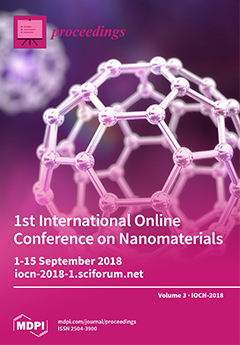Zirconium oxide (ZrO
2) is a wide and direct band gap semiconductor used for the fabrication of optoelectronic devices. ZrO
2 based optoelectronic devices span a wide optical range depending on the band gap of ZrO
2 material. The band gap of
[...] Read more.
Zirconium oxide (ZrO
2) is a wide and direct band gap semiconductor used for the fabrication of optoelectronic devices. ZrO
2 based optoelectronic devices span a wide optical range depending on the band gap of ZrO
2 material. The band gap of ZrO
2 can be tuned by fabricating it to the nanoscale. In this paper, we synthesized the ZrO
2 nanostructures on quartz substrate using ZrO
2 ions produced by the ablation of ZrO
2 pellet due to high temperature, high density, and extremely non-equilibrium argon plasma in a modified dense plasma focus device. Uniformly distributed monoclinic ZrO
2 nanostructures with an average dimension of ~14 nm were obtained through X-ray diffraction and scanning electron microscopy studies. The monoclinic phase of ZrO
2 nanostructures is further confirmed from photoluminescence (PL) and Raman spectra. PL spectra show peaks in ultra-violet (UV), near-UV, and visible regions with tunable band gap of nanostructures. A similar tunability of band gap was observed from absorption spectra. The obtained structural, morphological, and optical properties are compared to investigate the potential applications of ZrO
2 nanostructures in optoelectronic devices.
Full article



